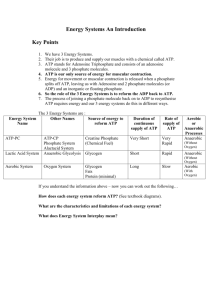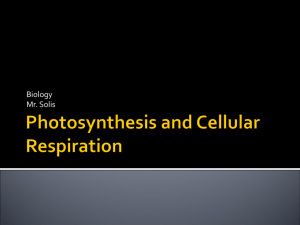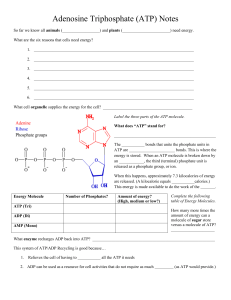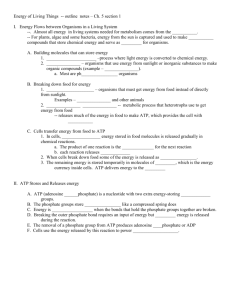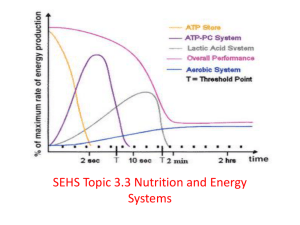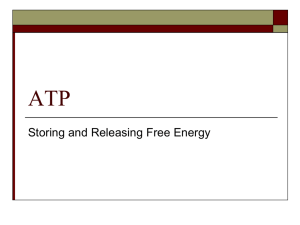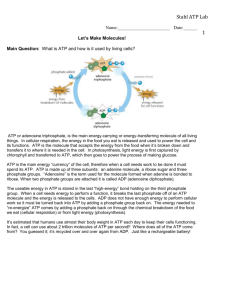Document
advertisement
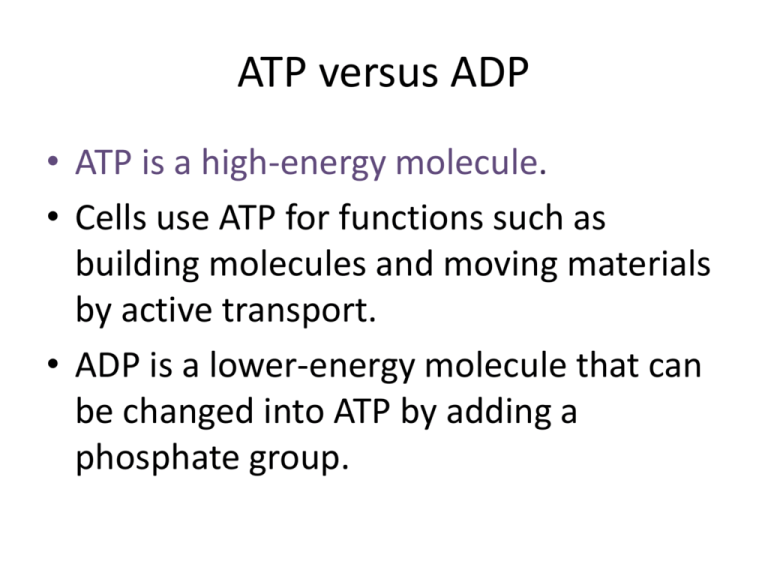
ATP versus ADP • ATP is a high-energy molecule. • Cells use ATP for functions such as building molecules and moving materials by active transport. • ADP is a lower-energy molecule that can be changed into ATP by adding a phosphate group. • The energy carried by ATP is released when the bond between the second and third phosphates is broken. A phosphate group is also released at this time. • The energy released from ATP is then used for various cell functions. • To convert ADP back to ATP, a phosphate group must be added, along with an input of energy. Question: What does “ATP” stand for? Answer: Adenosine Triphosphate Question: What are the components of ATP? Answer: ATP is made up of an adenosine molecule bonded to 3 phosphate groups Question: What is the difference between ATP and ADP? Answer: ATP has 3 phosphate groups, while Adenosine Diphosphate (ADP) only has 2 phosphate groups *Remember: tri=3 di=2




